Abstract
The opsonization by polymorphonuclear leukocytes of group B streptococcal serotypes associated with neonatal sepsis and delayed meningitis was studied. A specific BIa opsonizing antibody (not related to the antipolysaccharide typing antibody) was present in only 10% of the population tested. Serotype BIa was not opsonized in the absence of this specific antibody. BIa antibody specificity was demonstrated by macroagglutination and absorption with BIa streptococci and extracts, but not by gel diffusion. The binding of complement by the BIa opsonin increased the mean phagocytic activity by 60%; complement was manifested via the classic and/or alternate C3-related pathway, but seldom by both concurrently. Serotypes BIb, BIc, BII, and BIII were naturally and nonspecifically opsonized in 95% of the human and baboon sera or plasma tested. Although similar levels of opsonization were present in hyperimmune rabbit sera, heat inactivation and homologous bacterial absorption did not reduce the level of phagocytic activity in the rabbit, human, or primate groups studied. These immunological studies confirmed previous findings that serotype BIa presents a serious hazard for neonatal sepsis, with a nearly 100% mortality. Exclusive isolation of BIII in delayed meningitis suggests that ingestion and subsequent killing by polymorphonuclear leukocytes of type III may differ from the other serotypes.
Full text
PDF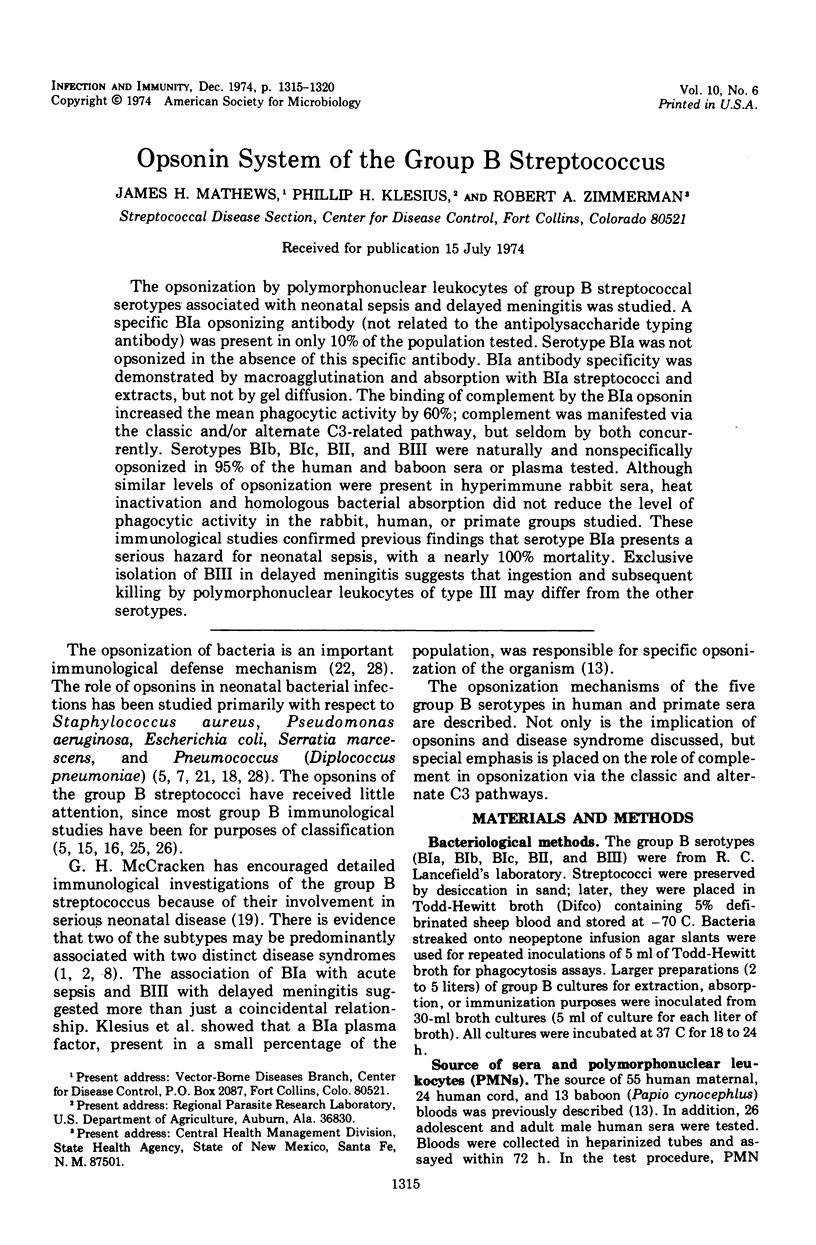
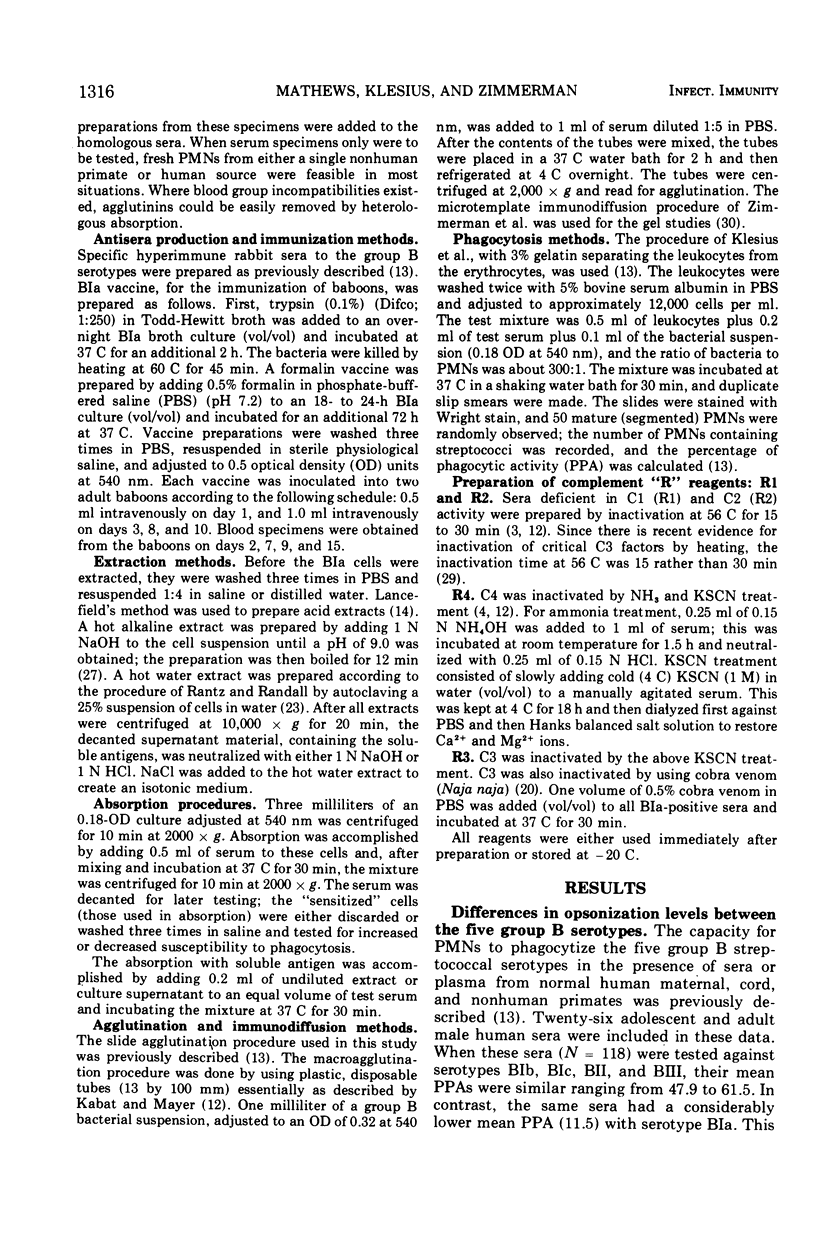
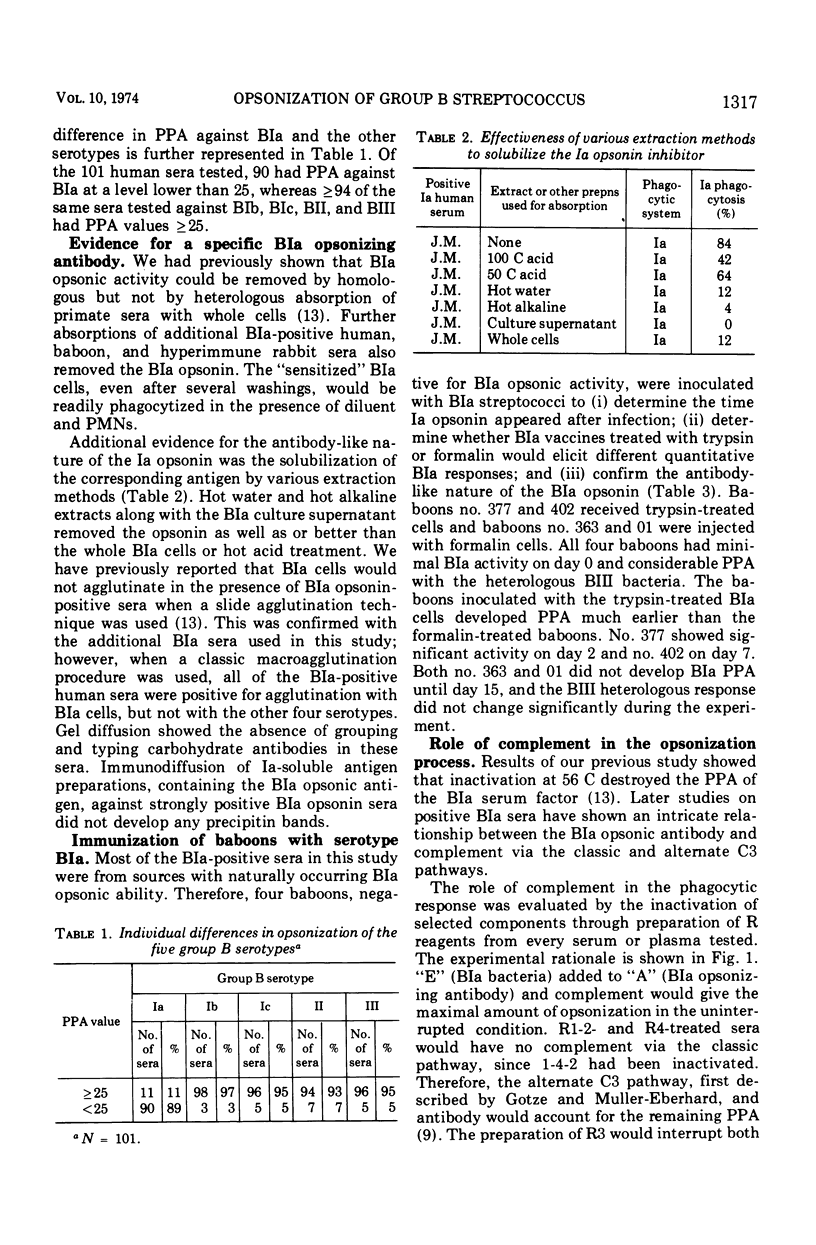
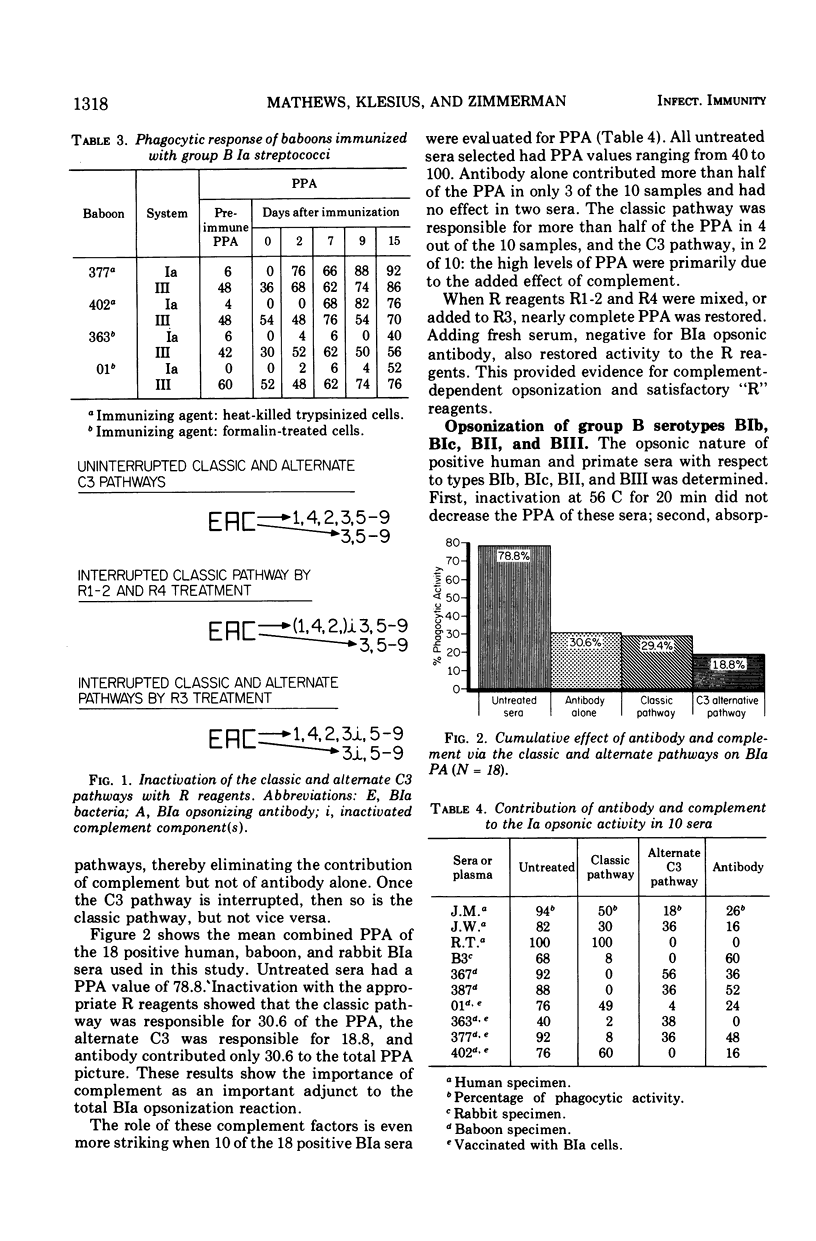
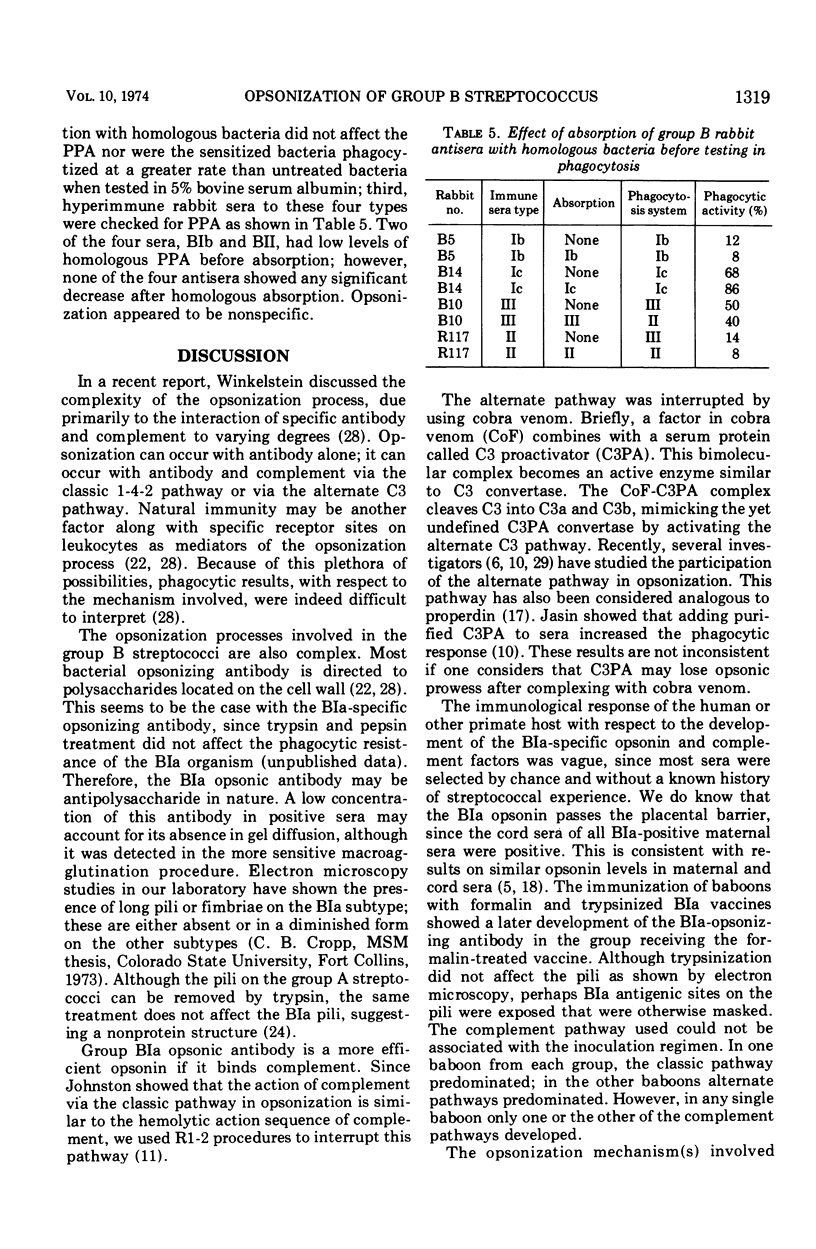
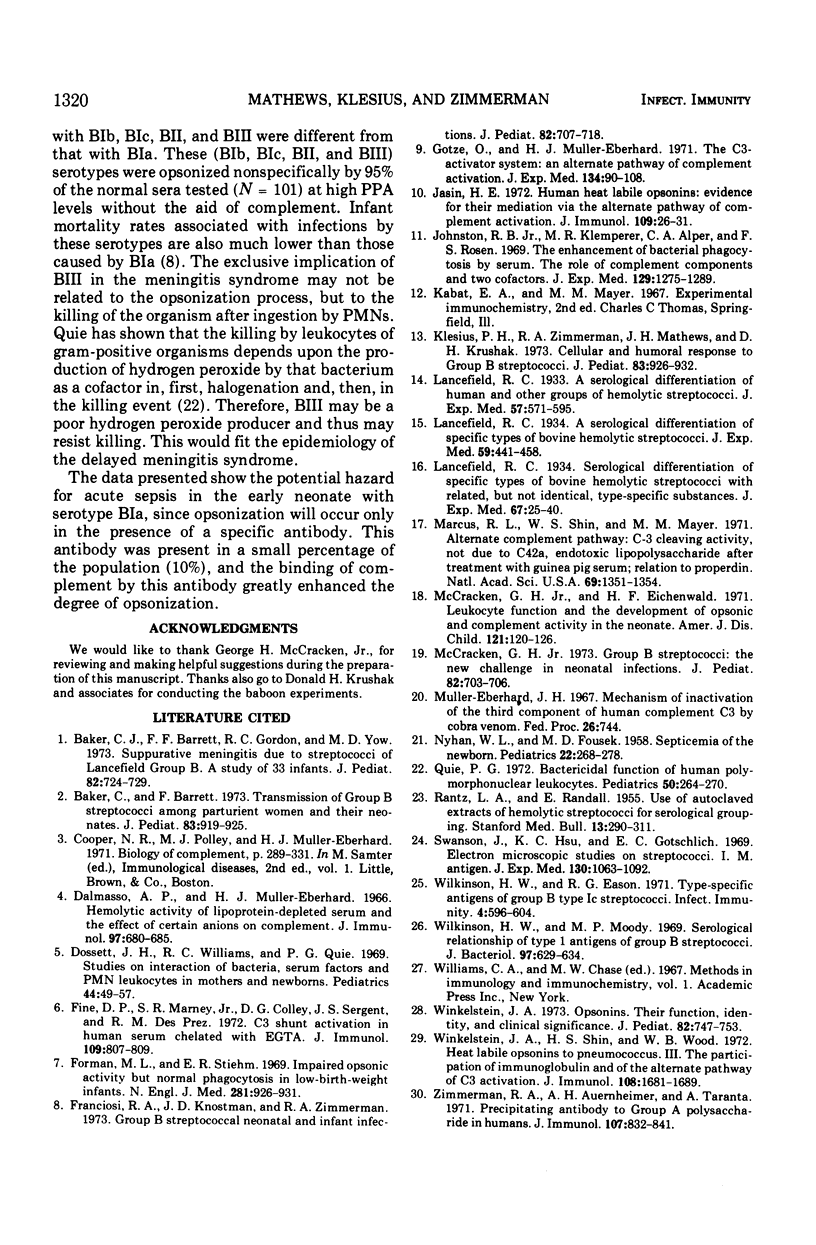
Selected References
These references are in PubMed. This may not be the complete list of references from this article.
- Baker C. J., Barrett F. F., Gordon R. C., Yow M. D. Suppurative meningitis due to streptococci of Lancefield group B: a study of 33 infants. J Pediatr. 1973 Apr;82(4):724–729. doi: 10.1016/s0022-3476(73)80606-7. [DOI] [PubMed] [Google Scholar]
- Baker C. J., Barrett F. F. Transmission of group B streptococci among parturient women and their neonates. J Pediatr. 1973 Dec;83(6):919–925. doi: 10.1016/s0022-3476(73)80524-4. [DOI] [PubMed] [Google Scholar]
- Dalmasso A. P., Müller-Eberhard H. J. Hemolytic activity of lipoprotein-depleted serum and the effect of certain anions on complement. J Immunol. 1966 Nov;97(5):680–685. [PubMed] [Google Scholar]
- Dossett J. H., Williams R. C., Jr, Quie P. G. Studies on interaction of bacteria, serum factors and polymorphonuclear leukocytes in mothers and newborns. Pediatrics. 1969 Jul;44(1):49–57. [PubMed] [Google Scholar]
- Fine D. P., Marney S. R., Jr, Colley D. G., Sergent J. S., Des Prez R. M. C3 shunt activation in human serum chelated with EGTA. J Immunol. 1972 Oct;109(4):807–809. [PubMed] [Google Scholar]
- Forman M. L., Stiehm E. R. Impaired opsonic activity but normal phagocytosis in low-birth-weight infants. N Engl J Med. 1969 Oct 23;281(17):926–931. doi: 10.1056/NEJM196910232811704. [DOI] [PubMed] [Google Scholar]
- Franciosi R. A., Knostman J. D., Zimmerman R. A. Group B streptococcal neonatal and infant infections. J Pediatr. 1973 Apr;82(4):707–718. doi: 10.1016/s0022-3476(73)80604-3. [DOI] [PubMed] [Google Scholar]
- Jasin H. E. Human heat labile opsonins: evidence for their mediation via the alternate pathway of complement activation. J Immunol. 1972 Jul;109(1):26–31. [PubMed] [Google Scholar]
- Johnston R. B., Jr, Klemperer M. R., Alper C. A., Rosen F. S. The enhancement of bacterial phagocytosis by serum. The role of complement components and two cofactors. J Exp Med. 1969 Jun 1;129(6):1275–1290. doi: 10.1084/jem.129.6.1275. [DOI] [PMC free article] [PubMed] [Google Scholar]
- Klesius P. H., Zimmerman R. A., Mathews J. H., Krushak D. H. Cellular and humoral immune response to group B streptococci. J Pediatr. 1973 Dec;83(6):926–932. doi: 10.1016/s0022-3476(73)80525-6. [DOI] [PubMed] [Google Scholar]
- Marcus R. L., Shin H. S., Mayer M. M. An alternate complement pathway: C-3 cleaving activity, not due to C4,2a, on endotoxic lipopolysaccharide after treatment with guinea pig serum; relation to properdin. Proc Natl Acad Sci U S A. 1971 Jun;68(6):1351–1354. doi: 10.1073/pnas.68.6.1351. [DOI] [PMC free article] [PubMed] [Google Scholar]
- McCracken G. H., Jr, Eichenwald H. F. Leukocyte function and the development of opsonic and complement activity in the neonate. Am J Dis Child. 1971 Feb;121(2):120–126. doi: 10.1001/archpedi.1971.02100130074008. [DOI] [PubMed] [Google Scholar]
- McCracken G. H., Jr Group B streptococci: the new challenge in neonatal infections. J Pediatr. 1973 Apr;82(4):703–706. doi: 10.1016/s0022-3476(73)80603-1. [DOI] [PubMed] [Google Scholar]
- NYHAN W. L., FOUSEK M. D. Septicemia of the newborn. Pediatrics. 1958 Aug;22(2):268–278. [PubMed] [Google Scholar]
- Quie P. G. Bactericidal function of human polymorphonuclear leukocytes. E. Mead Johnson Award Address. Pediatrics. 1972 Aug;50(2):264–270. [PubMed] [Google Scholar]
- RANTZ L. A., RANDALL E. Use of autoclaved extracts of hemolytic streptococci for serological grouping. Stanford Med Bull. 1955 May;13(2):290–291. [PubMed] [Google Scholar]
- Swanson J., Hsu K. C., Gotschlich E. C. Electron microscopic studies on streptococci. I. M antigen. J Exp Med. 1969 Nov 1;130(5):1063–1091. doi: 10.1084/jem.130.5.1063. [DOI] [PMC free article] [PubMed] [Google Scholar]
- Wilkinson H. W., Eagon R. G. Type-specific antigens of group B type Ic streptococci. Infect Immun. 1971 Nov;4(5):596–604. doi: 10.1128/iai.4.5.596-604.1971. [DOI] [PMC free article] [PubMed] [Google Scholar]
- Wilkinson H. W., Moody M. D. Serological relationships of type I antigens of group B streptococci. J Bacteriol. 1969 Feb;97(2):629–634. doi: 10.1128/jb.97.2.629-634.1969. [DOI] [PMC free article] [PubMed] [Google Scholar]
- Winkelstein J. A. Opsonins: their function, identity, and clinical significance. J Pediatr. 1973 May;82(5):747–753. doi: 10.1016/s0022-3476(73)80062-9. [DOI] [PubMed] [Google Scholar]
- Winkelstein J. A., Shin H. S., Wood W. B., Jr Heat labile opsonins to Pneumococcus. 3. The participation of immunoglobulin and of the alternate pathway of C3 activation. J Immunol. 1972 Jun;108(6):1681–1689. [PubMed] [Google Scholar]
- Zimmerman R. A., Auernheimer A. H., Taranta A. Precipitating antibody to group A streptococcal polysaccharide in humans. J Immunol. 1971 Sep;107(3):832–841. [PubMed] [Google Scholar]


